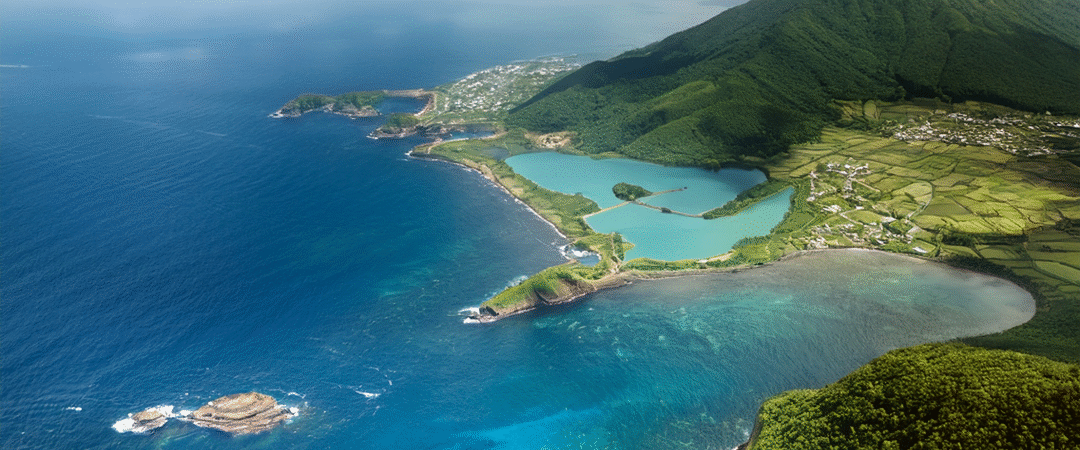When planning a getaway to an island paradise, two names often come up for those in Asia and beyond: Guam and Jeju Island. Both offer stunning natural beauty and a relaxed pace of life, but they also boast unique characteristics that set them apart. Let’s dive into what makes these islands similar and different, helping you decide which destination is perfect for your next escape.
Similarities: Island Vibes and Natural Beauty
At first glance, Guam and Jeju Island share a foundational appeal: they are both islands. This inherently means a strong connection to the ocean, offering beautiful coastlines, diverse marine life, and a plethora of water-based activities.
- Volcanic Origins: Both islands have volcanic histories, which have sculpted their dramatic landscapes. Jeju Island is famously home to Hallasan Mountain, a dormant volcano and South Korea’s highest peak, with unique lava tubes and volcanic rock formations that are UNESCO World Heritage sites. Guam also features volcanic terrain, contributing to its rugged beauty.
- Beautiful Beaches and Water Activities: Whether you’re in Guam or Jeju, you’ll find inviting sandy shores and clear waters. Snorkeling, scuba diving, swimming, and various water sports are popular activities on both islands, allowing visitors to fully immerse themselves in the island lifestyle.
- Relaxed Pace: Compared to bustling mainland cities, both Guam and Jeju offer a slower, more laid-back atmosphere, perfect for those seeking to unwind and escape the daily grind.
- Tourism Focus: Both islands are heavily reliant on tourism, and as such, they’ve developed infrastructure and attractions catering to visitors. You’ll find a range of accommodations, dining options, and organized tours in both destinations.
Differences: A Tale of Two Cultures and Climates
While they share some island commonalities, the distinctions between Guam and Jeju Island are significant, largely stemming from their geographical locations, cultural heritage, and political affiliations.
- Climate and Seasons: This is perhaps the most striking difference.
- Guam: As a tropical island in the western Pacific, Guam enjoys a consistently warm climate year-round, with average temperatures around 81°F (27.2°C). It has a distinct dry season (January to May) and rainy season (July to November), with June and December being transitional months. Typhoons are possible, especially from July to September.
- Jeju Island: Located off the southern tip of South Korea, Jeju has a temperate humid climate with four distinct seasons. While its summers can feel tropical, winters are cold, with Mount Hallasan often sporting a snow cap. Spring (March to May) and Fall (October to November) are considered the best times to visit for pleasant temperatures and vibrant scenery (cherry blossoms in spring, colorful foliage in fall).
- Culture and Influence:
- Guam: As a U.S. territory, Guam has a strong blend of indigenous Chamorro culture with significant American influences. You’ll find a mix of English and Chamorro spoken, and the cuisine reflects both local traditions and American tastes.
- Jeju Island: Jeju boasts a unique Korean identity, with its own distinct dialect, culinary traditions (like the famous haenyeo, female free-divers), and a strong emphasis on Korean heritage. While popular with international tourists, it’s a major domestic travel destination for Koreans, which shapes its tourism offerings and cultural experiences.
- Geography and Landscape Diversity:
- Guam: While volcanic, Guam’s landscape tends to be more uniformly tropical and coastal.
- Jeju Island: Jeju offers a more diverse range of landscapes due to its varied climate and the prominent Hallasan Mountain. Beyond beaches, you’ll find vast forests, unique volcanic cones (oreums), and agricultural lands (known for tangerines). The island’s geography allows for activities like hiking Hallasan in diverse conditions, from lush summer trails to snowy winter ascents.
- Activities Beyond the Beach:
- Guam: Activities often revolve around its beautiful beaches, water sports, and duty-free shopping.
- Jeju Island: While beaches are a draw, Jeju offers a wider array of activities that leverage its unique landscape, including extensive hiking trails (like the Olle trails), horseback riding, golf courses, and numerous themed museums and parks.
- Accessibility and Primary Tourist Markets:
- Guam: Historically a popular destination for Japanese tourists, and increasingly attracting visitors from other Asian countries. Direct flights from various Asian hubs are common.
- Jeju Island: Primarily a domestic tourist destination for South Koreans, though it’s gaining international recognition, particularly among Chinese visitors. Flights within South Korea are frequent and often more affordable. International flights exist but may be less direct or frequent than to Guam depending on your origin.
Which Island is For You?
- Choose Guam if: You’re seeking a classic tropical island escape with consistent warm weather, American influences, and a focus on beach relaxation and water activities. It’s a great option for duty-free shopping.
- Choose Jeju Island if: You desire a more diverse natural landscape with distinct seasons, a unique Korean cultural experience, and a wider range of activities beyond just the beach, including hiking, exploring volcanic formations, and unique cultural encounters.
Both Guam and Jeju Island offer unforgettable experiences, each with its own charm and appeal. Understanding their similarities and differences will help you pick the perfect island paradise for your next adventure!
